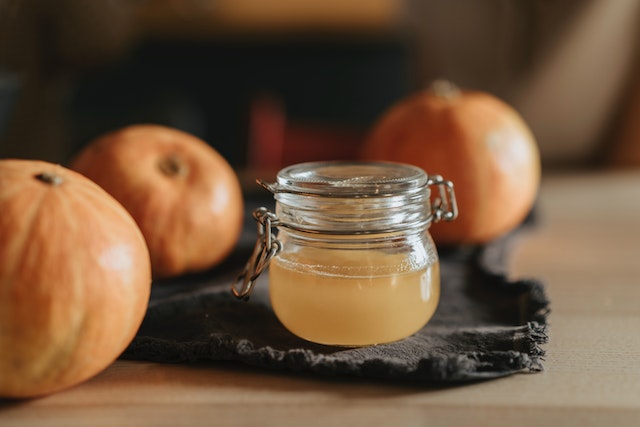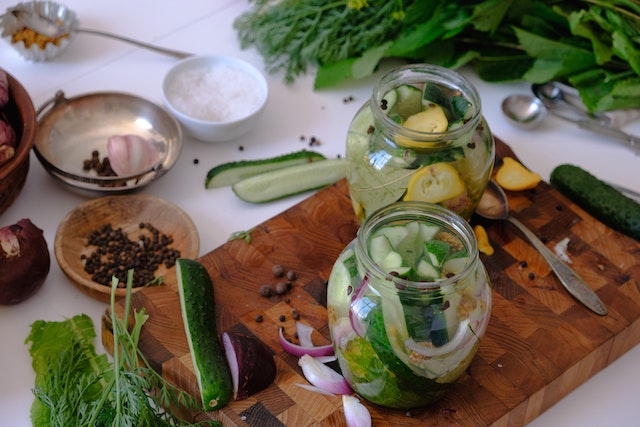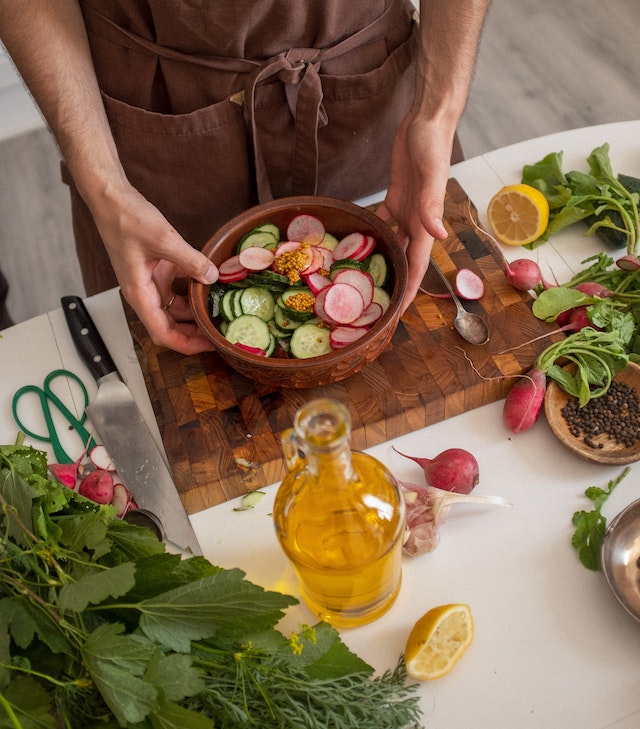
Vinegar, a versatile liquid derived from the fermentation of various alcoholic substances, has long been revered as an indispensable ingredient in numerous culinary traditions across the globe. In the realm of gastronomy, its sharp and tangy properties have enticed the taste buds of countless connoisseurs, elevating dishes to new heights of flavor. From its humble origins as a preservative and medicinal tonic in ancient civilizations, vinegar has evolved into a staple condiment that commands a treasured place in kitchens worldwide.
Renowned for its ability to both enhance and harmonize flavors, vinegar’s acidic nature acts as a catalyst, transforming the ordinary into the extraordinary. Whether embracing its simple yet transformative qualities in dressings, marinades, or pickled delights, or employing its magical touch to balance the sweetness in delectable desserts, there are few culinary realms where vinegar does not reign supreme.
Types of Vinegar
Balsamic Vinegar:
A prized vinegar originating from Italy, balsamic vinegar is known for its rich, dark color and complex, sweet flavor. Crafted from the sweet must of Trebbiano grapes, it undergoes a meticulous aging process in wooden barrels, infusing it with a unique blend of sweetness and acidity. Balsamic vinegar lends itself beautifully to drizzling over salads, grilled vegetables, and even certain fruits, imparting a delightful balance of flavors.
Apple Cider Vinegar:
Made from fermented apple juice, apple cider vinegar possesses a distinct amber hue and a sharp, fruity taste. Its versatility in both culinary and medicinal uses has made it a staple in households around the world. Apple cider vinegar adds a tangy zest to dressings, marinades, and sauces, while also being touted for its potential health benefits, such as aiding digestion and promoting weight loss.
Red Wine Vinegar:
Derived from the fermentation of red wine, this vinegar offers a robust, nuanced flavor profile that enhances both savory and tangy dishes. Its deep-red color and assertive taste make it a popular choice for vinaigrettes, pickling, and deglazing pans while cooking.
White Wine Vinegar:
Similar to red wine vinegar, white wine vinegar is crafted from the fermentation of white wine, resulting in a lighter, more delicate flavor. Its mildly acidic and subtly fruity taste make it ideal for making light vinaigrettes, marinades, and delicate sauces.

Rice Vinegar:
Hailing from Asian cuisines, rice vinegar is made from fermented rice and often has a milder flavor compared to other vinegars. With its delicate and slightly sweet taste, rice vinegar is frequently used in sushi rice, stir-fries, marinades, and dipping sauces.
Champagne Vinegar:
As the name suggests, champagne vinegar is crafted from the fermented juice of Champagne grapes. It offers a delicate yet vibrant flavor, making it a sophisticated choice for salad dressings, delicate seafood dishes, and even desserts.
The Culinary Uses of Vinegar
Vinegar’s remarkable versatility extends far beyond its unassuming appearance in a bottle. Its acidic tang and complex flavor profile make it an indispensable ingredient in an array of culinary creations, infusing depth and balance into dishes with a single splash. Let us explore the vast realm of vinegar’s culinary uses, from dressings to desserts.
Dressings
When it comes to salads, a well-crafted dressing is the key to transforming a simple medley of greens into a symphony of flavors. Vinegar plays a starring role in dressings, cutting through the richness of oils and adding a tangy punch. Whether it be a classic vinaigrette with red wine vinegar or a refreshing blend of apple cider vinegar, honey, and Dijon mustard, vinegar brings brightness and balance to every bite.
Marinades
Marinades are a chef’s secret weapon when it comes to infusing meats, poultry, and even vegetables with mouthwatering flavor. Vinegar acts as a tenderizing agent, breaking down proteins and allowing flavors to penetrate deeply. From balsamic vinegar-marinated grilled vegetables to white wine vinegar-infused chicken, the possibilities are endless for creating succulent and flavorful dishes.
Pickling
In the pursuit of preserving the vibrant flavors of seasonal produce, vinegar once again claims its throne. The fermentation process, fueled by vinegar’s acidity, transforms humble cucumbers, onions, beets, and countless other vegetables into delectable pickled delights. Whether enjoyed as a tangy accompaniment or a crunchy addition to sandwiches and salads, pickled goods owe their zesty charm to the magical properties of vinegar.
Desserts
While vinegar may seem an unlikely ally in the realm of desserts, its ability to balance sweetness with acidity proves invaluable. A splash of balsamic vinegar can enhance the flavors of strawberries and chocolate, creating a tantalizing symphony on the palate. Likewise, apple cider vinegar can lend subtle tang to fruit compotes, while white wine vinegar can elevate the brightness of lemon-infused confections. In the world of vinegar, sweet sensations await those willing to explore its remarkable potential.
Cooking Techniques with Vinegar
Vinegar isn’t just for adding a dash of tang to your dishes; it can also be a key player in various cooking techniques. Here, we’ll explore some common ways to use vinegar in your culinary adventures.

Deglazing with Vinegar
Enhancing Pan Sauces and Gravies
Deglazing is a technique used to create flavorful sauces or gravies. Here’s how you can do it with vinegar:
How to Deglaze with Vinegar:
- After cooking meat or vegetables in a pan, remove them.
- Add a small amount of vinegar (typically wine or balsamic) to the hot pan.
- Scrape up the flavorful brown bits (fond) from the pan using a wooden spoon.
- The vinegar mixes with the fond to create a rich, savory sauce.
2. Creating Vinegar Reductions
Concentrating Flavor and Thickness
Vinegar reductions are used to intensify the flavor and thickness of sauces. Here’s how you can make one:
How to Create a Vinegar Reduction:
- In a saucepan, add vinegar (commonly balsamic or red wine vinegar).
- Simmer over low heat until it thickens and reduces in volume.
- The resulting reduction can be drizzled over various dishes for added flavor.
3. Marinating with Vinegar
Tenderizing and Flavoring Meats
Marinating is a technique used to tenderize meats and infuse them with flavor. Vinegar can be an essential part of your marinade:

How to Marinate with Vinegar:
- Mix vinegar with other marinade ingredients like oil, herbs, and spices.
- Place the meat in the marinade and let it sit for a specified time (varies by recipe).
- The vinegar helps tenderize the meat and adds flavor.
4. Using Vinegar in Baking
Rising and Leavening in Baked Goods
Vinegar is sometimes used in baking to interact with leavening agents, such as baking soda, to help baked goods rise:
How to Use Vinegar in Baking:
- Add vinegar to a recipe that includes baking soda.
- The acid in the vinegar reacts with the baking soda, creating carbon dioxide gas, which causes the dough or batter to rise.
Health Benefits and Considerations
Vinegar isn’t just a flavorful addition to your meals; it also offers some potential health benefits. Here, we’ll explore the advantages and considerations of incorporating vinegar into your cooking.
Digestive and Metabolic Benefits
Vinegar, particularly apple cider vinegar, has been linked to several health benefits:
- Digestion Aid: It may help improve digestion by promoting the production of stomach acid, aiding in the breakdown of food.
- Blood Sugar Control: Some studies suggest that vinegar can help regulate blood sugar levels, which may be beneficial for people with diabetes.
- Weight Management: Consuming vinegar with meals may help increase feelings of fullness, potentially reducing overall calorie intake.
Potential Health Concerns
While vinegar has its benefits, there are some considerations:

- Tooth Health: The acidity in vinegar can be harmful to tooth enamel. It’s a good practice to rinse your mouth with water after consuming vinegar to protect your teeth.
- Digestive Sensitivity: For some individuals, vinegar may exacerbate issues like acid reflux or gastritis. If you have a sensitive stomach, use vinegar in moderation.
- Undiluted Consumption: Drinking undiluted vinegar can be harsh on your digestive system and may lead to irritation. It’s best to dilute it before consumption.
Choosing the Right Vinegar for Health Goals
Not all vinegars offer the same potential health benefits. If you have specific health goals, consider the following:
- Apple Cider Vinegar: It’s often the go-to choice for health-conscious individuals due to its potential digestive and metabolic benefits.
- Balsamic Vinegar: While delicious, it’s often used in moderation due to its higher sugar content.
- Red Wine Vinegar: It may offer antioxidants but is typically used in smaller amounts in vinaigrettes and dressings.
- Rice Vinegar: Commonly used in Asian cuisine, it’s a milder option for those who want a lighter taste.
Remember that vinegar should be used as part of a balanced diet, and it’s essential to consult with a healthcare professional if you have specific health concerns or dietary restrictions.
